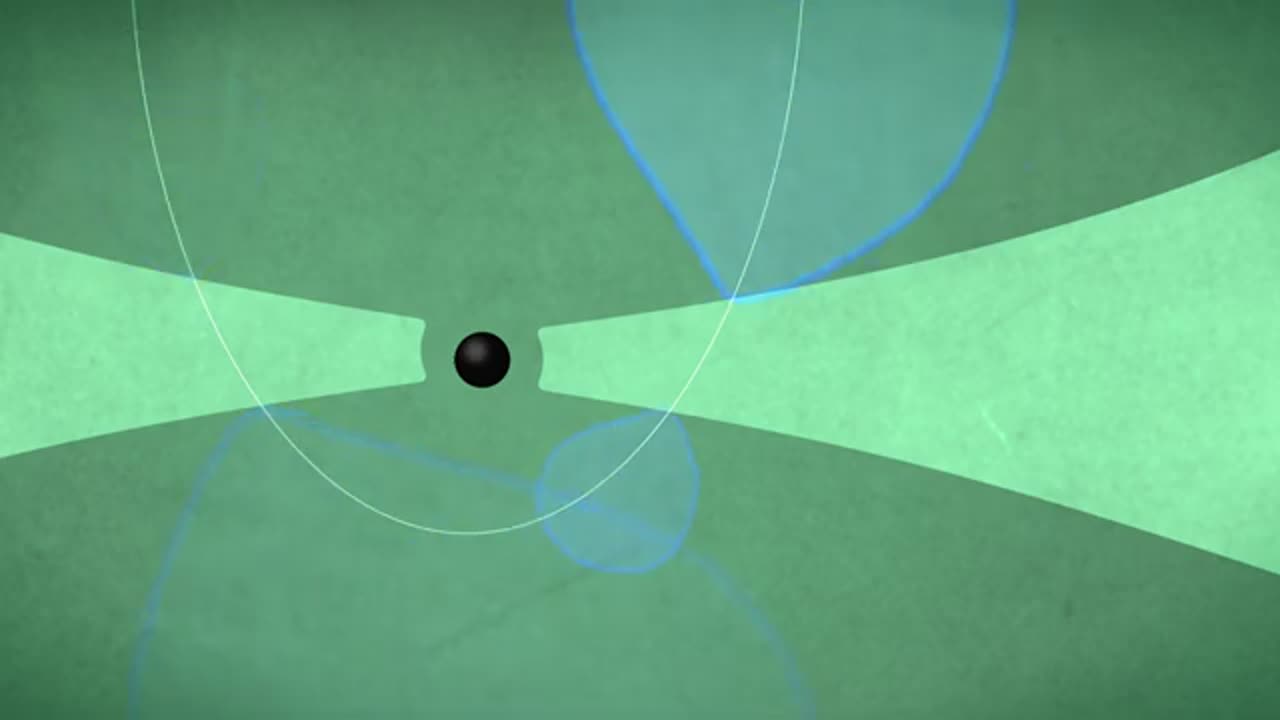Premium Only Content

NASA's NICER studies Recurring cosmic crashes
For the first time, astronomers have probed the physical environment of repeating X-ray outbursts near monster black holes thanks to data from NASA’s NICER (Neutron star Interior Composition Explorer) and other missions.
Scientists have only recently encountered this class of X-ray flares, called QPEs, or quasi-periodic eruptions. A galaxy astronomers have nicknamed Ansky is only the eighth QPE source discovered, and it produces the most energetic outbursts seen to date. Ansky also sets records in terms of timing and duration, with eruptions every 4.5 days or so that last approximately 1.5 days.
Ansky’s name comes from ZTF19acnskyy, the moniker of a visible-light outburst seen in 2019. It was located in a galaxy about 300 million light-years away in the constellation Virgo. This event was the first indication that something unusual might be happening.
A leading theory suggests that QPEs occur in systems where a relatively low-mass object passes through the disk of gas surrounding a supermassive black hole that holds hundreds of thousands to billions of times the Sun’s mass.
When the lower-mass object punches through the disk, its passage drives out expanding clouds of hot gas that we observe as QPEs in X-rays.
Scientists think their quasi-periodicity occurs because the smaller object’s orbit is not perfectly circular and spirals toward the black hole over time. Also, the extreme gravity close to the black hole warps the fabric of space-time, altering the object’s orbits so they don’t close on themselves with each cycle. Scientists’ current understanding suggests the eruptions repeat until the disk disappears or the orbiting object disintegrates, which may take up to a few years.
Scientists think Ansky’s extreme properties may be due to the nature of the disk around its supermassive black hole, which may be much larger and therefore involve objects farther away than previous examples, creating longer timescales.
Astronomers used data from NICER and ESA’s (European Space Agency’s) XMM-Newton space telescope to map the rapid evolution of the ejected material driving the observed QPEs in unprecedented detail by studying variations in X-ray intensity during the rise and fall of each eruption.
The researchers found that each impact resulted in about a Jupiter’s worth of mass reaching expansion velocities around 15% of the speed of light.
NICER’s ability to frequently observe Ansky from the space station and its unique measurement capabilities also made it possible for researchers to measure the size and temperature of the roughly spherical bubble of debris as it expanded.
For more information about this story: https://science.nasa.g...
Music credit: “Superluminal,” Lee Groves and Peter George Marett [PRS], Universal Production Music
Credit: NASA’s Goddard Space Flight Center
Producer: Scott Wiessinger (eMITS)
Science Writer: Jeanette Kazmierczak (University of Maryland College Park)
Narrator: Scott Wiessinger (eMITS)
Graphics: Scott Wiessinger (eMITS)
This video can be freely shared and downloaded at https://svs.gsfc.nasa..... While the video in its entirety can be shared without permission, the music and some individual imagery may have been obtained through permission and may not be excised or remixed in other products. Specific details on such imagery may be found here: https://svs.gsfc.nasa..... For more information on NASA’s media guidelines, visit https://nasa.gov/multi....
If you liked this video, subscribe
-
 LIVE
LIVE
Professor Nez
1 hour ago🔥 Trump TORCHES ABC Reporter for Disrespecting Saudi Crown Prince Mohammed bin Salman! (WOW!)
549 watching -
 1:06:52
1:06:52
DeVory Darkins
2 hours agoBREAKING: Congress issue MAJOR EPSTEIN Update as MTG goes OFF THE RAILS
99.5K62 -
 2:06:23
2:06:23
Side Scrollers Podcast
3 hours agoStreamer Awards WRECKED + Cloudfare OUTAGE + AI LOVED ONES?! + More | Side Scrollers
20.1K1 -
 1:57:30
1:57:30
Steven Crowder
5 hours agoSteven Crowder is a Deep State Agent
493K376 -
 1:04:17
1:04:17
Sean Unpaved
2 hours agoJames Franklin Is Going To REVIVE Virginia Tech! | UNPAVED
16.2K -
 LIVE
LIVE
Viss
5 hours ago🔴LIVE - Completing Quests & Annihilating All in Our Path! - Arc Raiders!
88 watching -
 53:51
53:51
The Rubin Report
4 hours agoBill Maher Obliterates Patton Oswalt’s Liberal Bubble in Only 2 Minutes
51.5K50 -
 LIVE
LIVE
LumpyPotatoX2
4 hours agoWhere Winds Meet: Just Petting Kitties - Made in China
49 watching -
 LIVE
LIVE
ReAnimateHer
19 hours ago $0.12 earnedTwisted Tales & True Crime - Inbred Byrd Sisters & Graysone Homestead
85 watching -
 1:08:01
1:08:01
iCkEdMeL
2 hours ago $1.06 earned🚨Mom Gives Birth on Highway After Kicked Out of Hospital?!
25.1K6